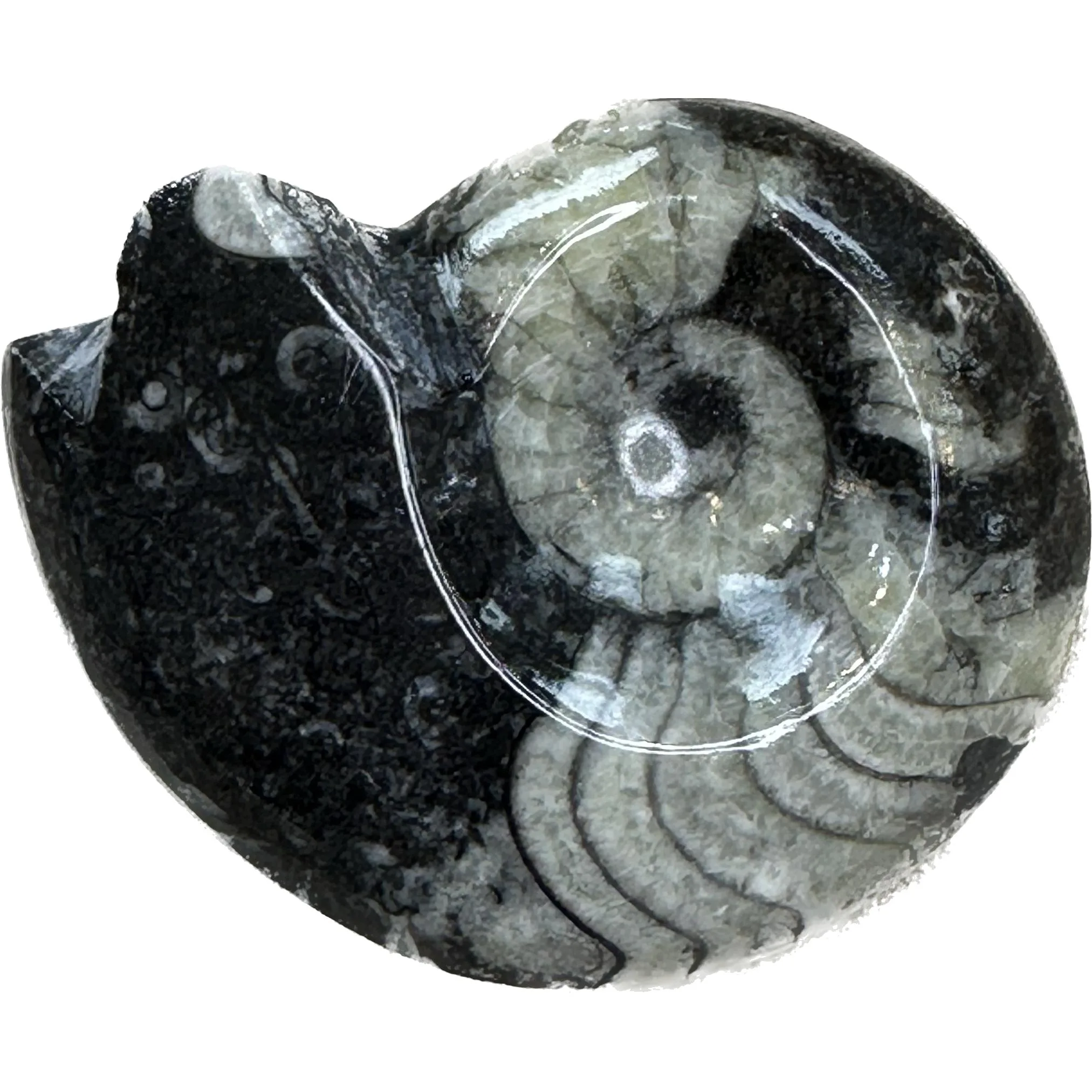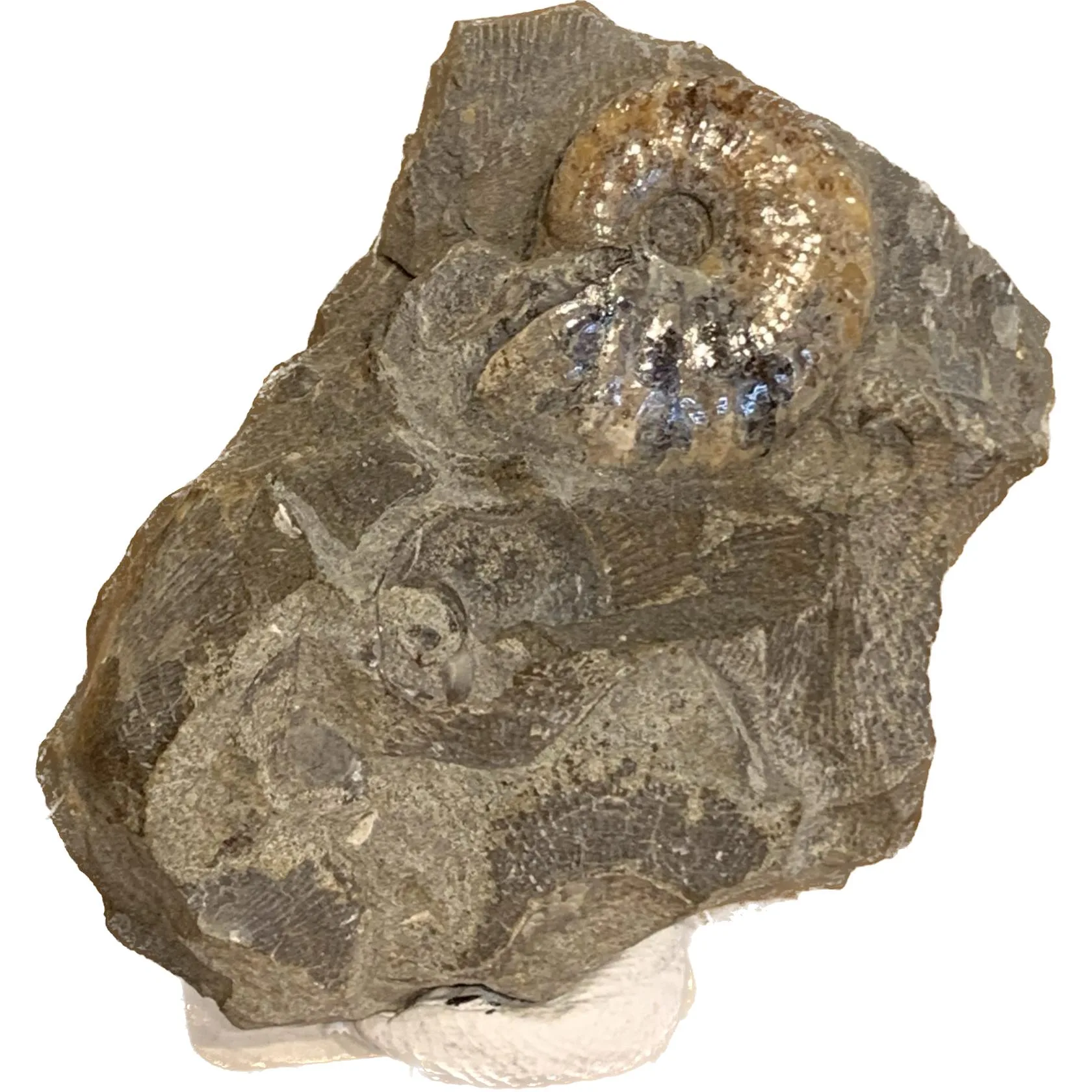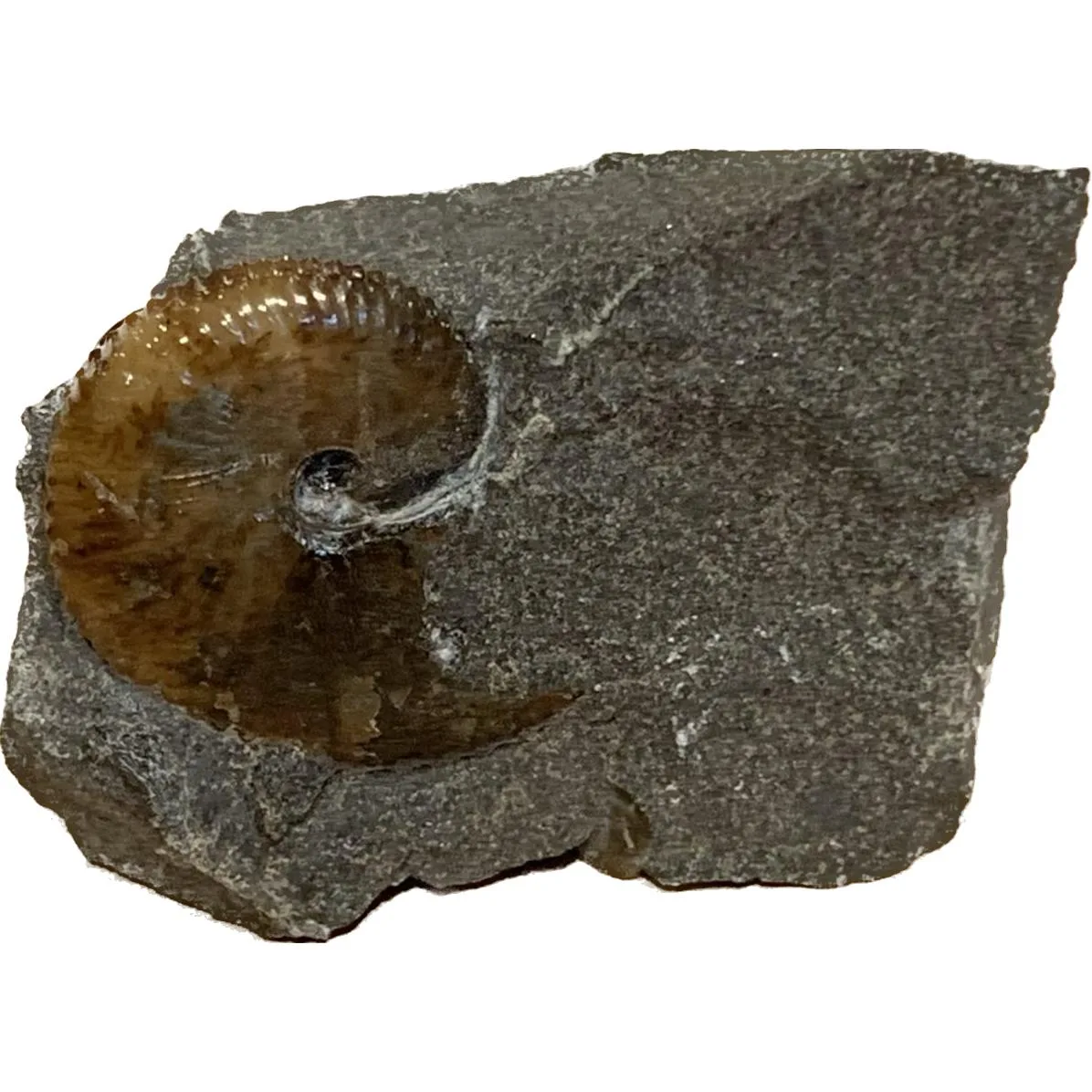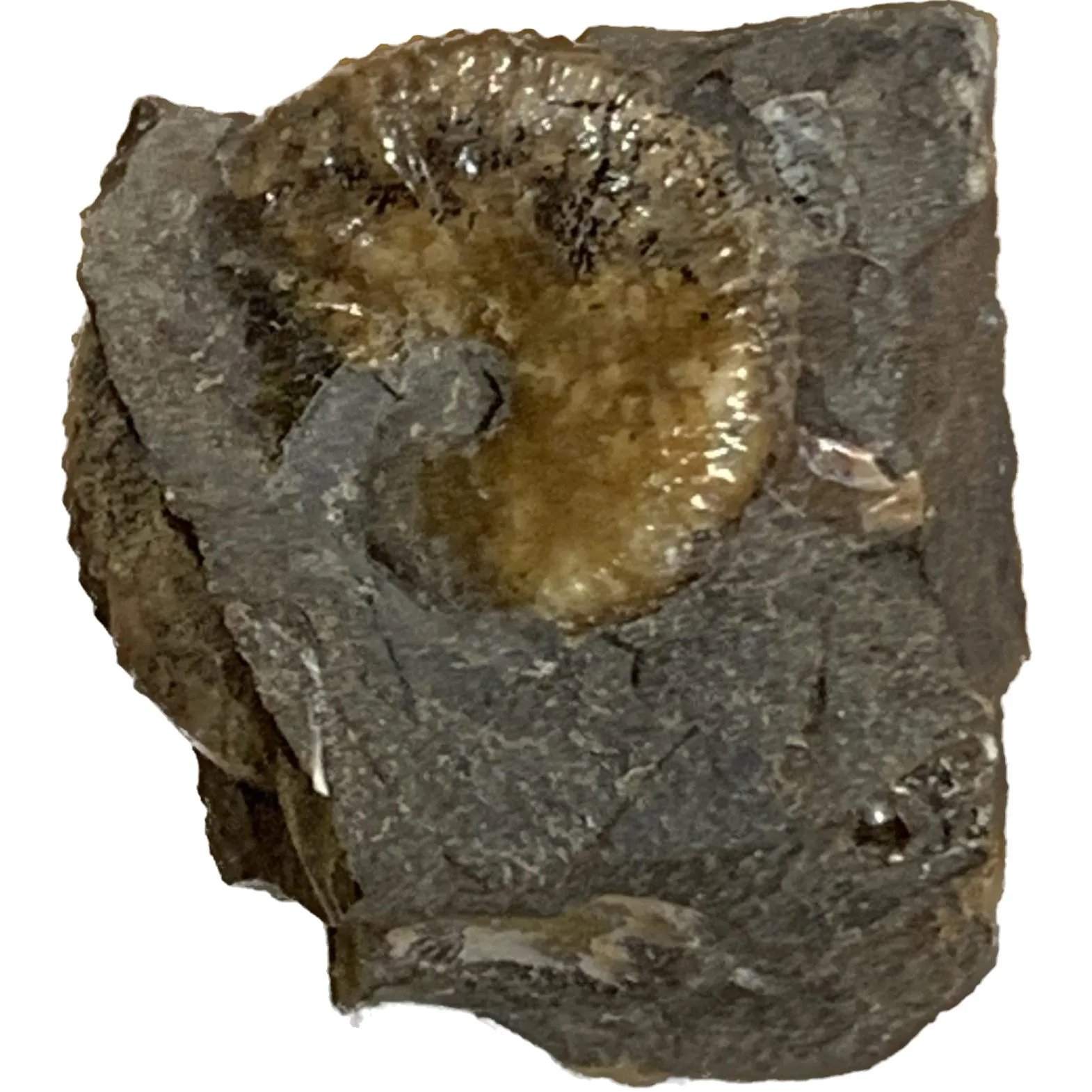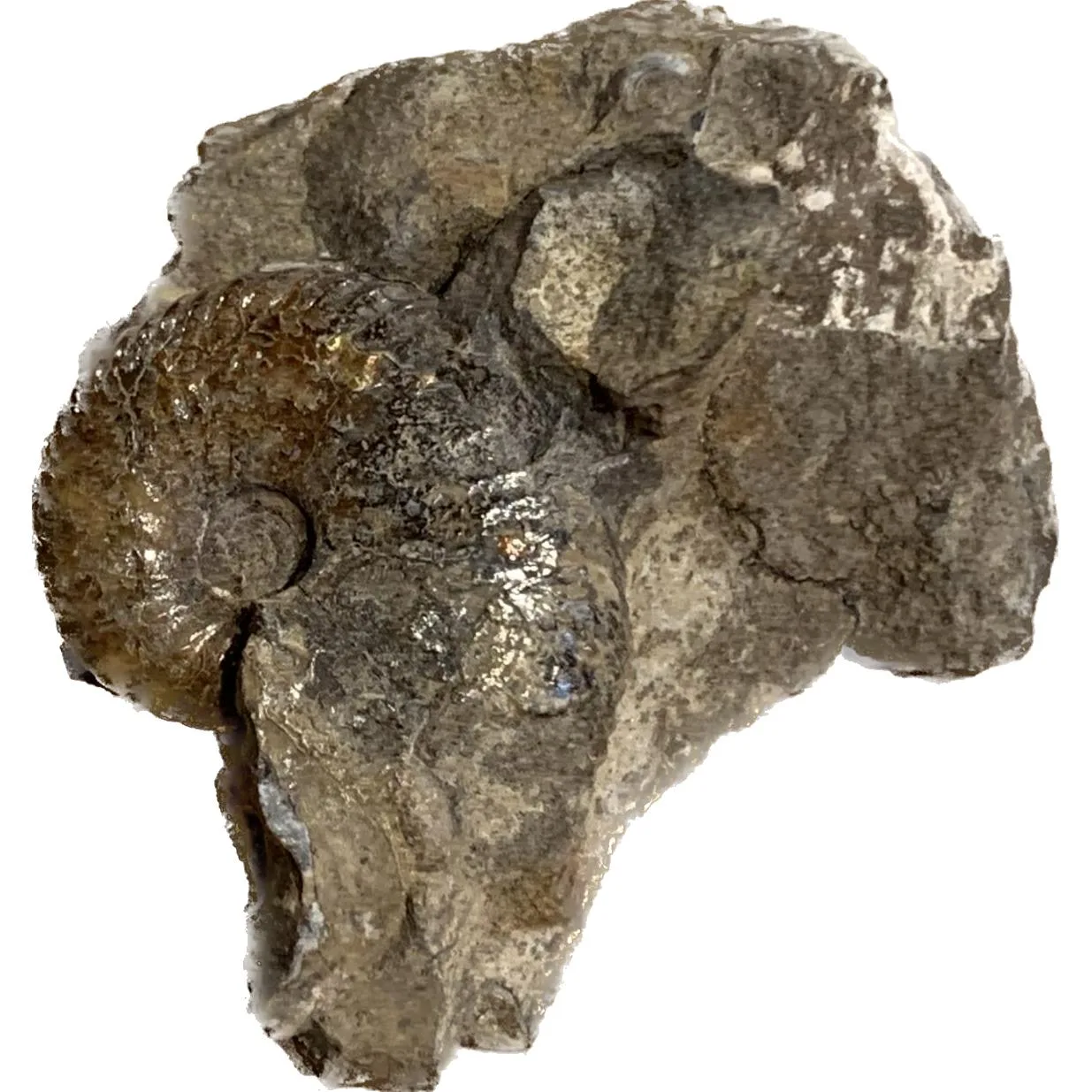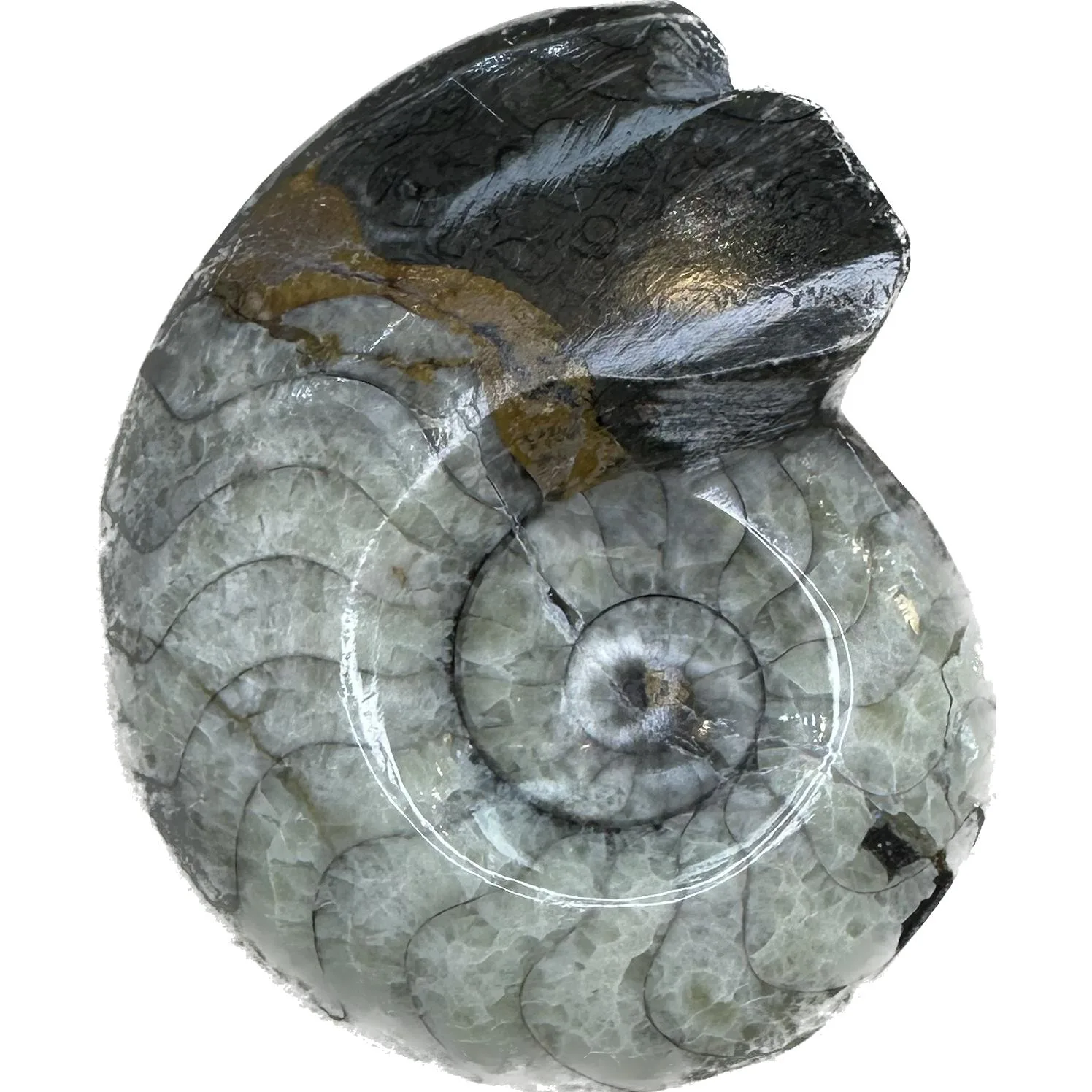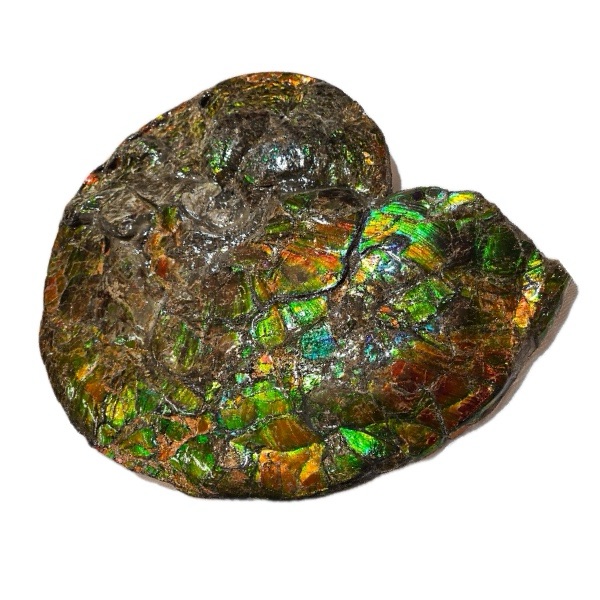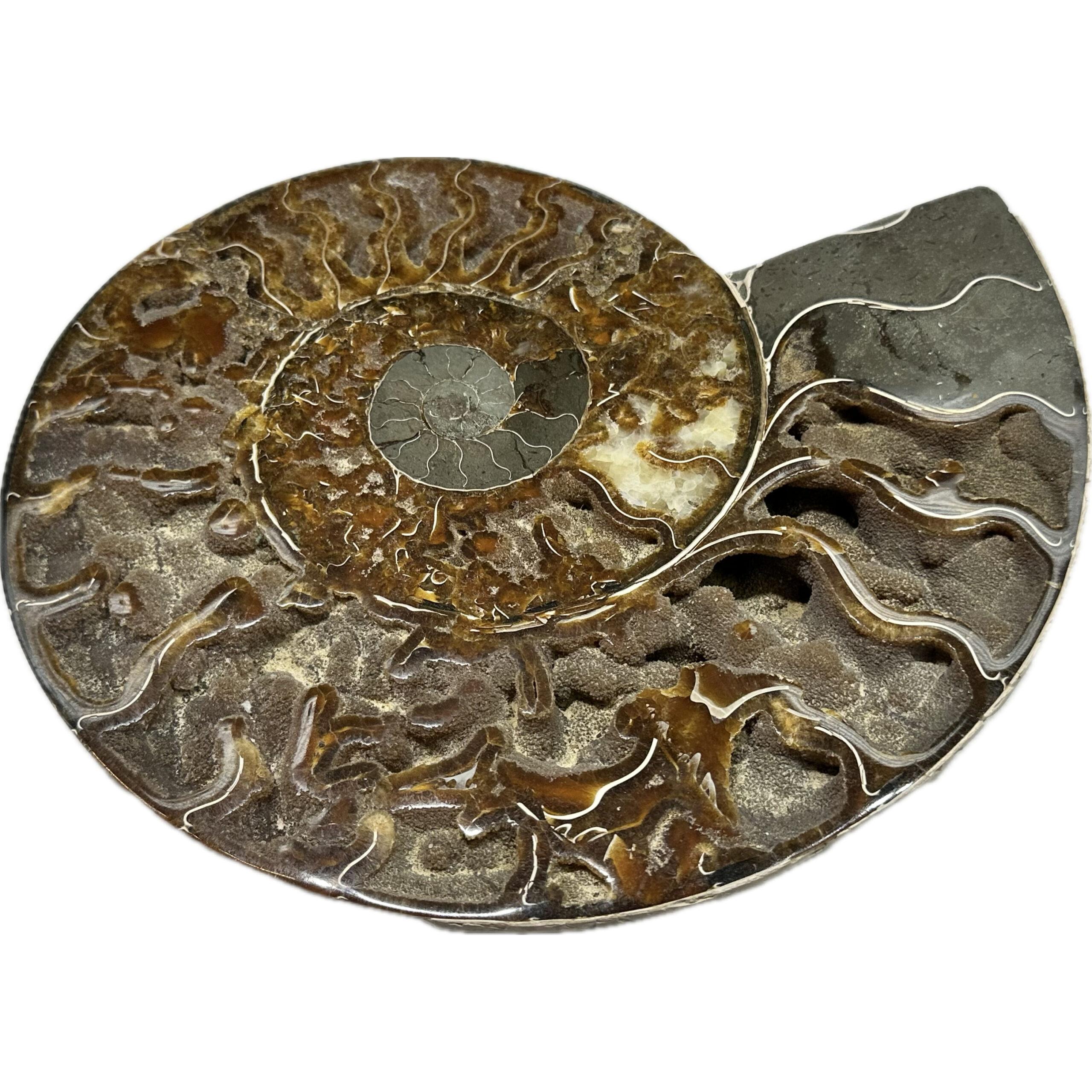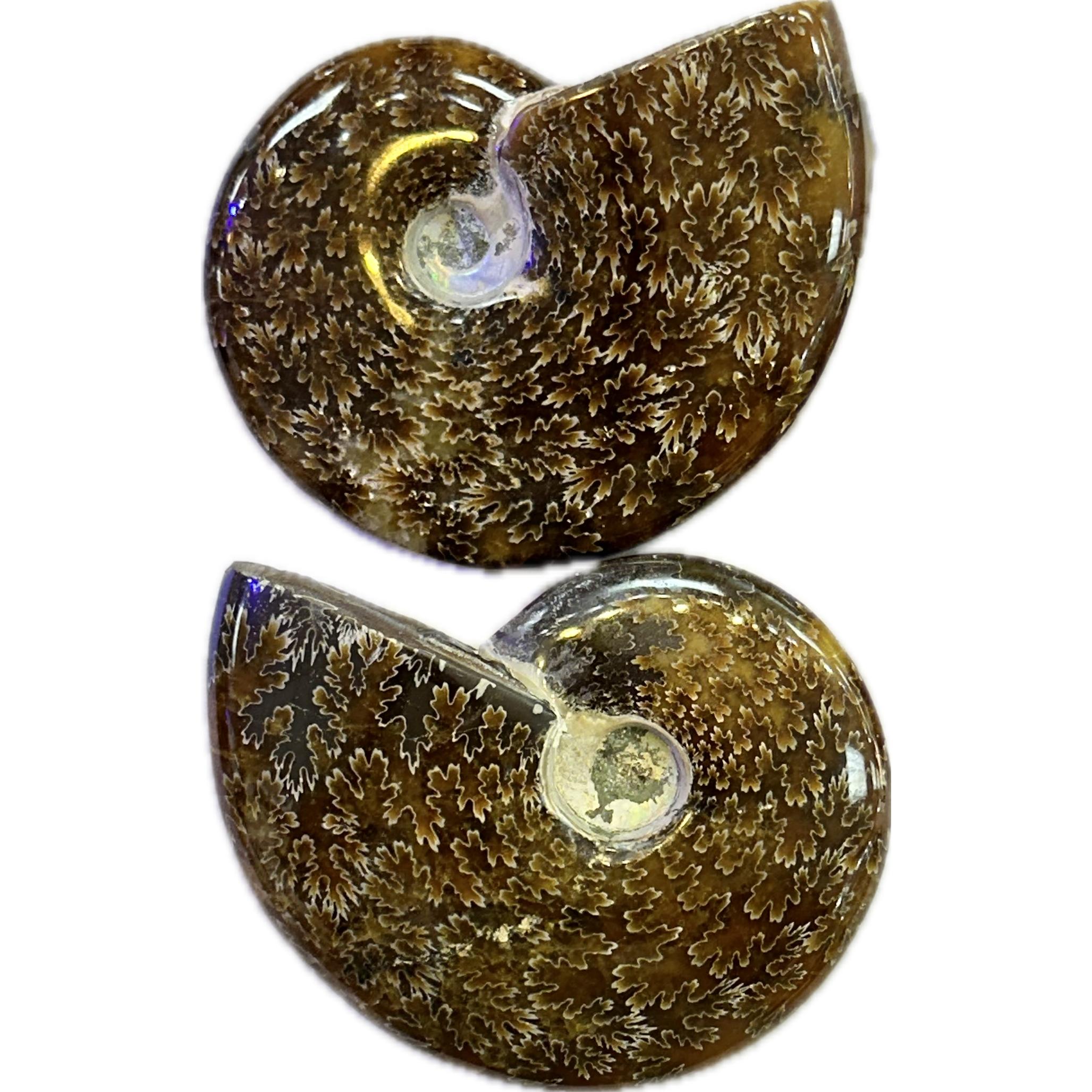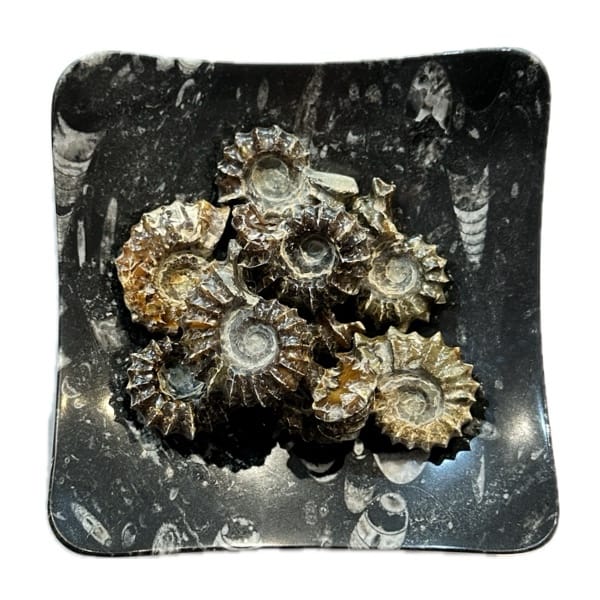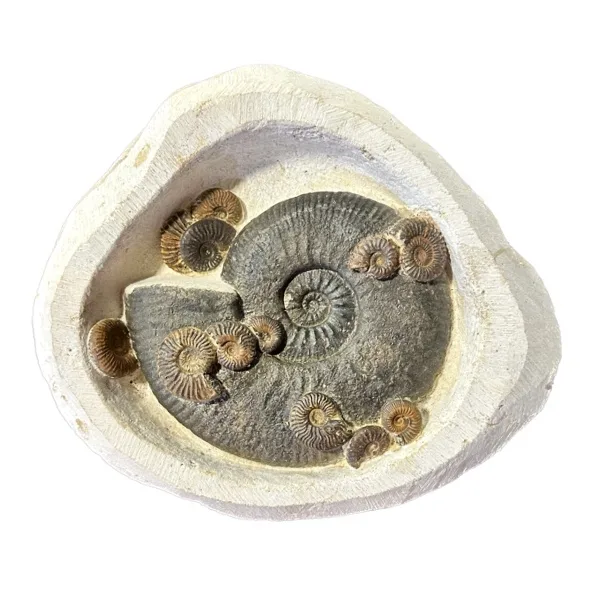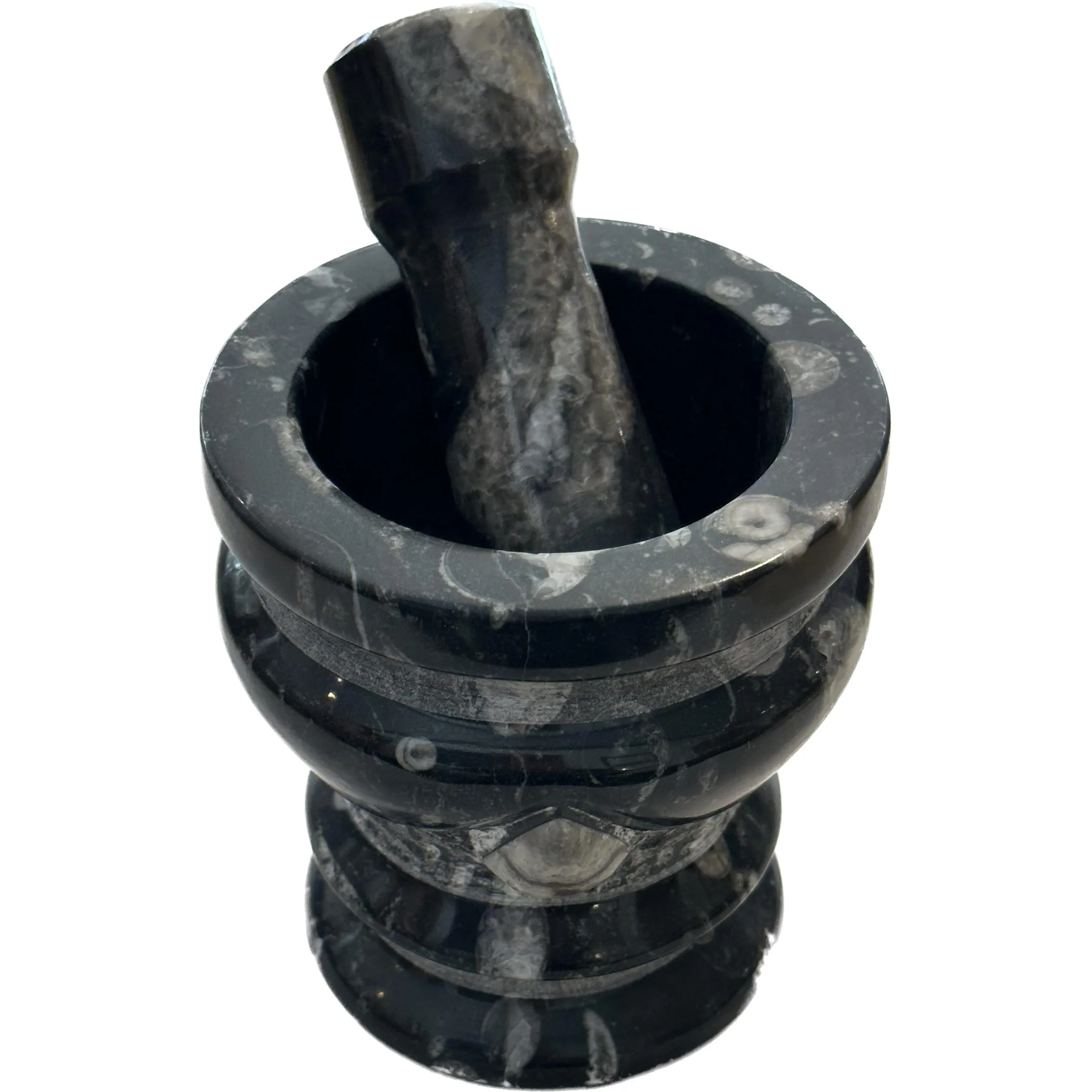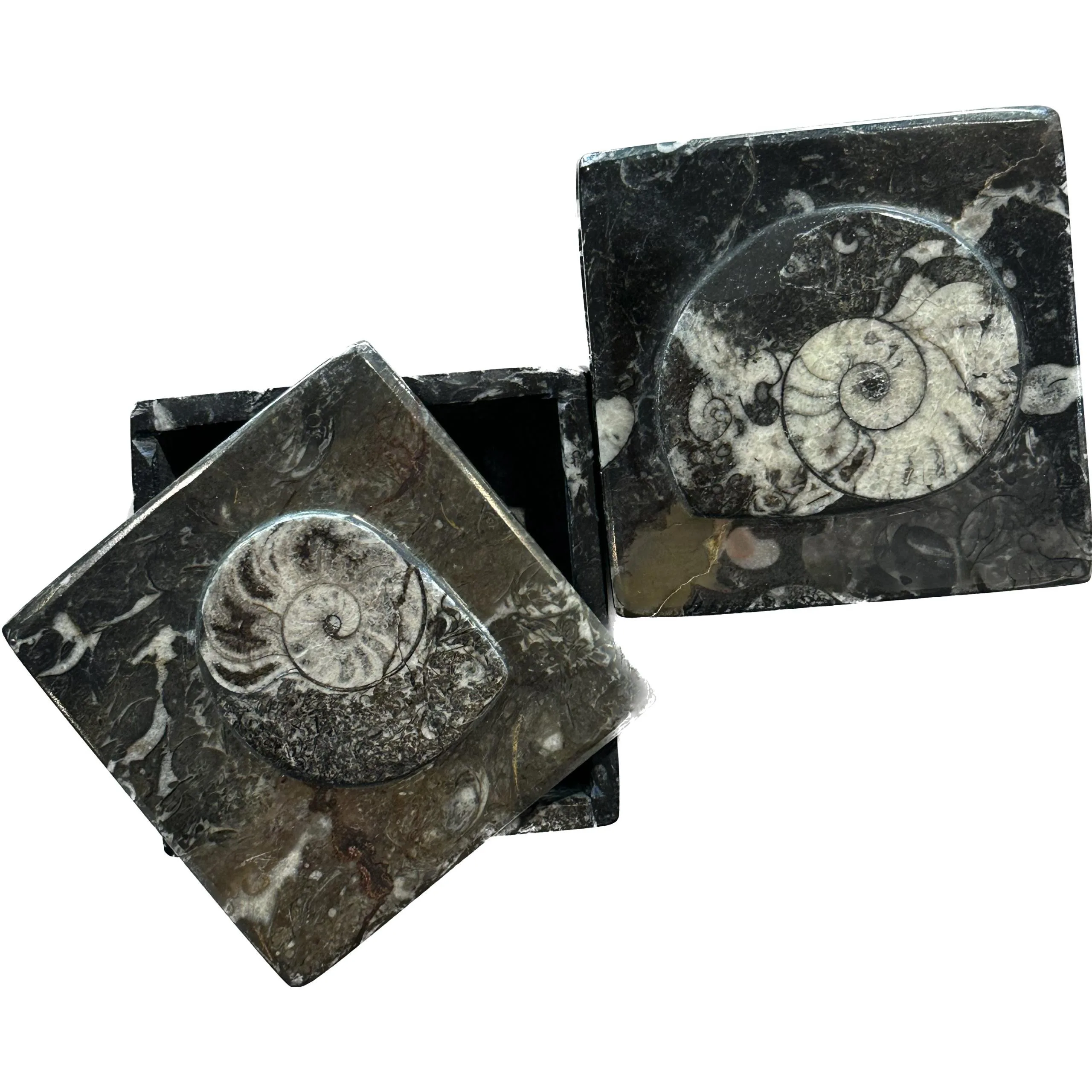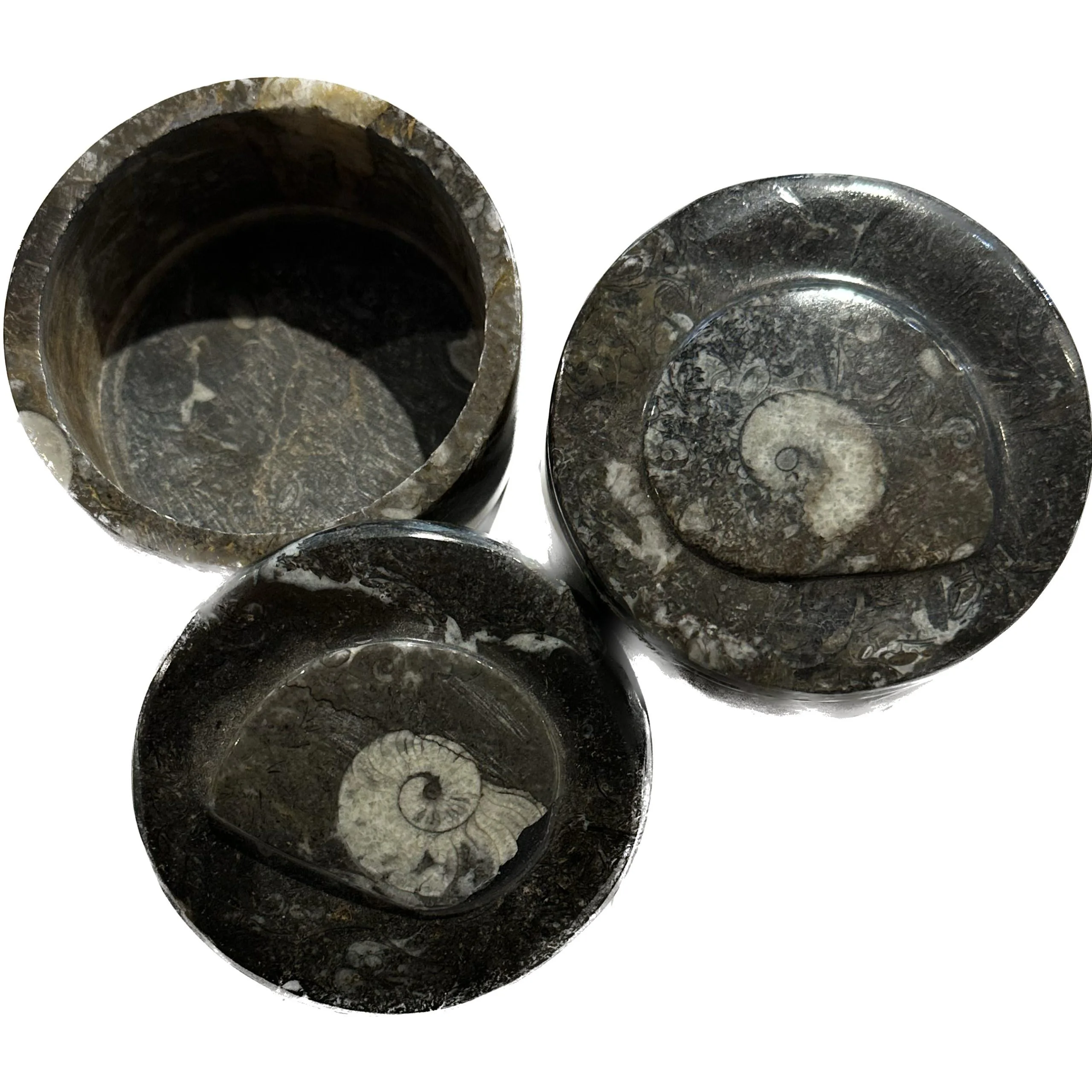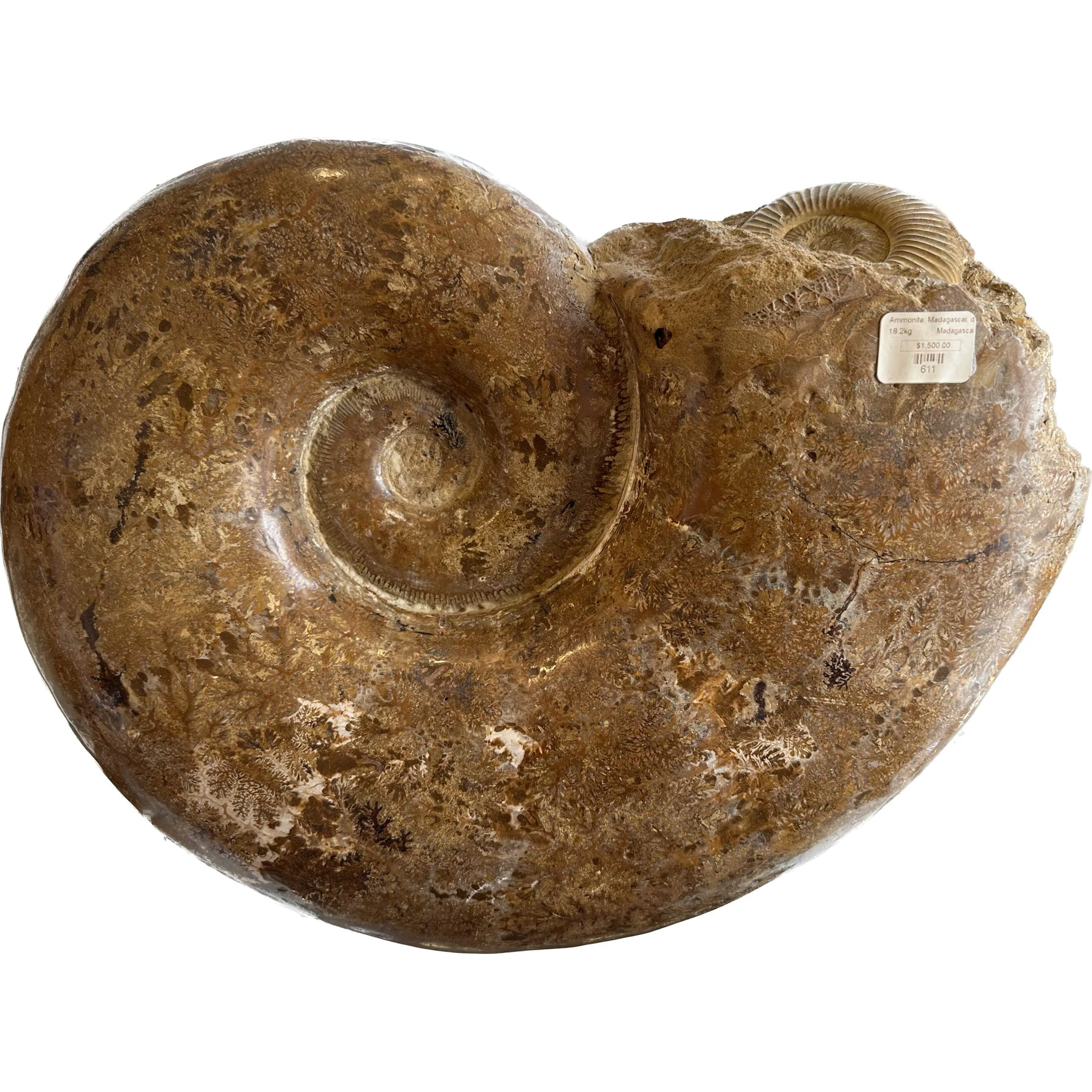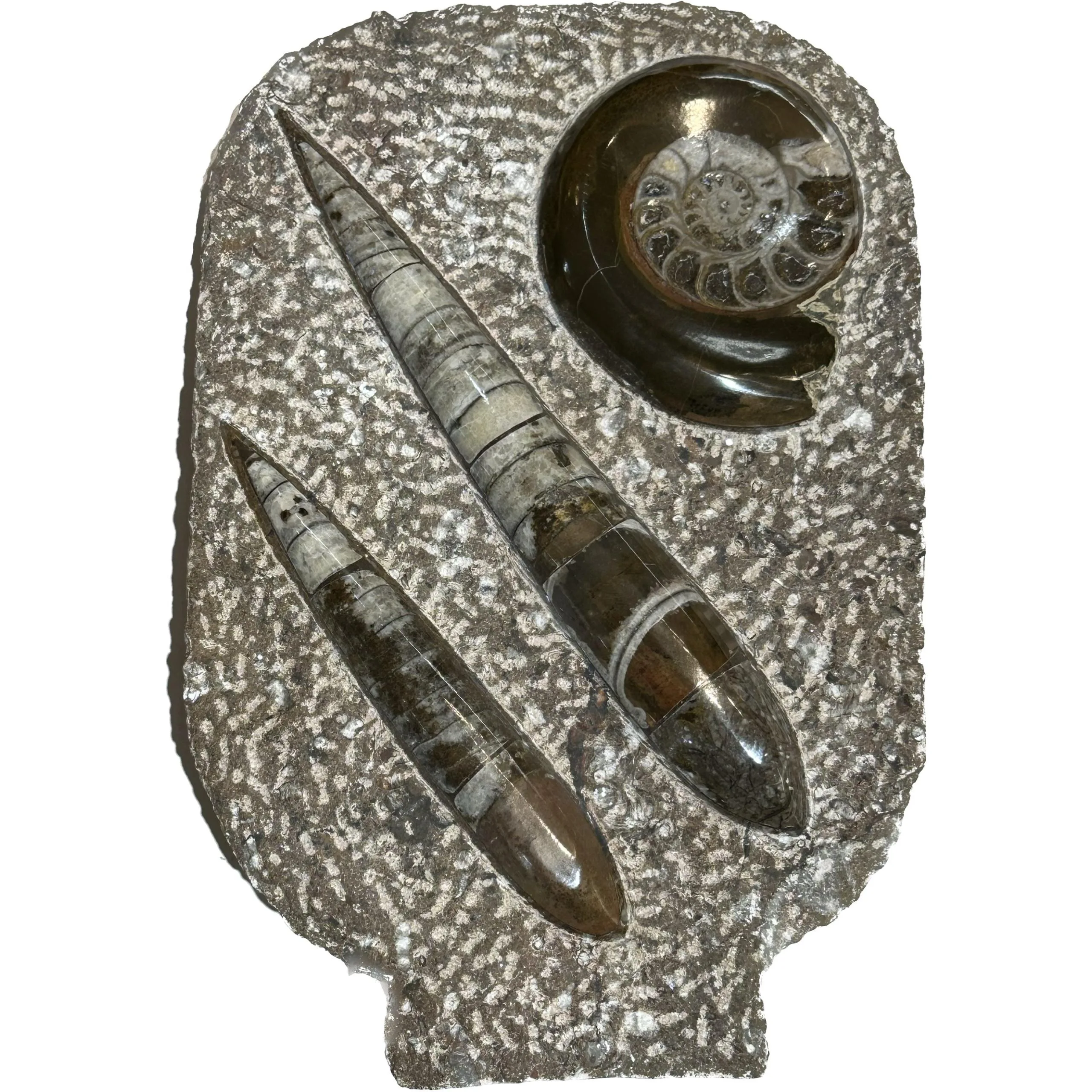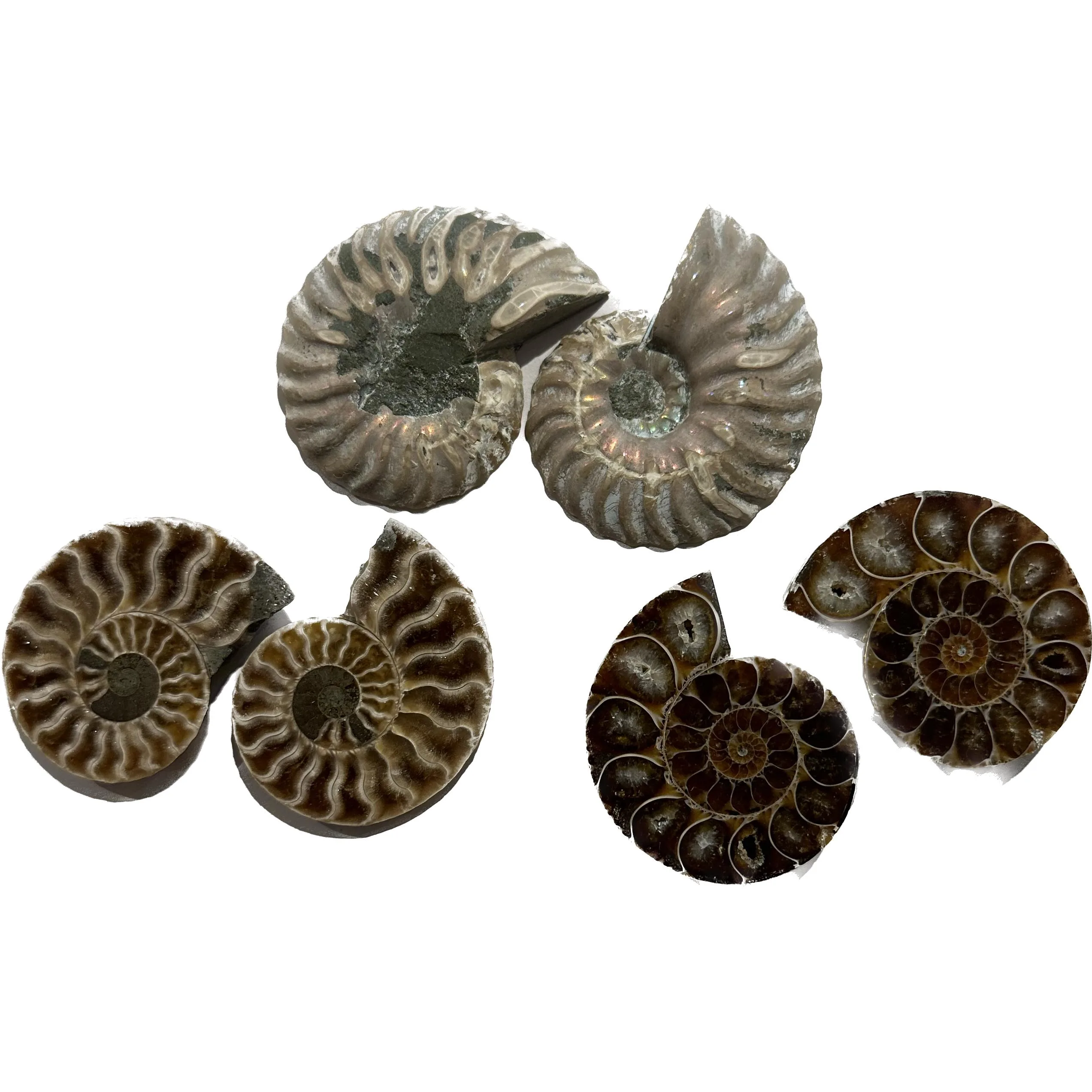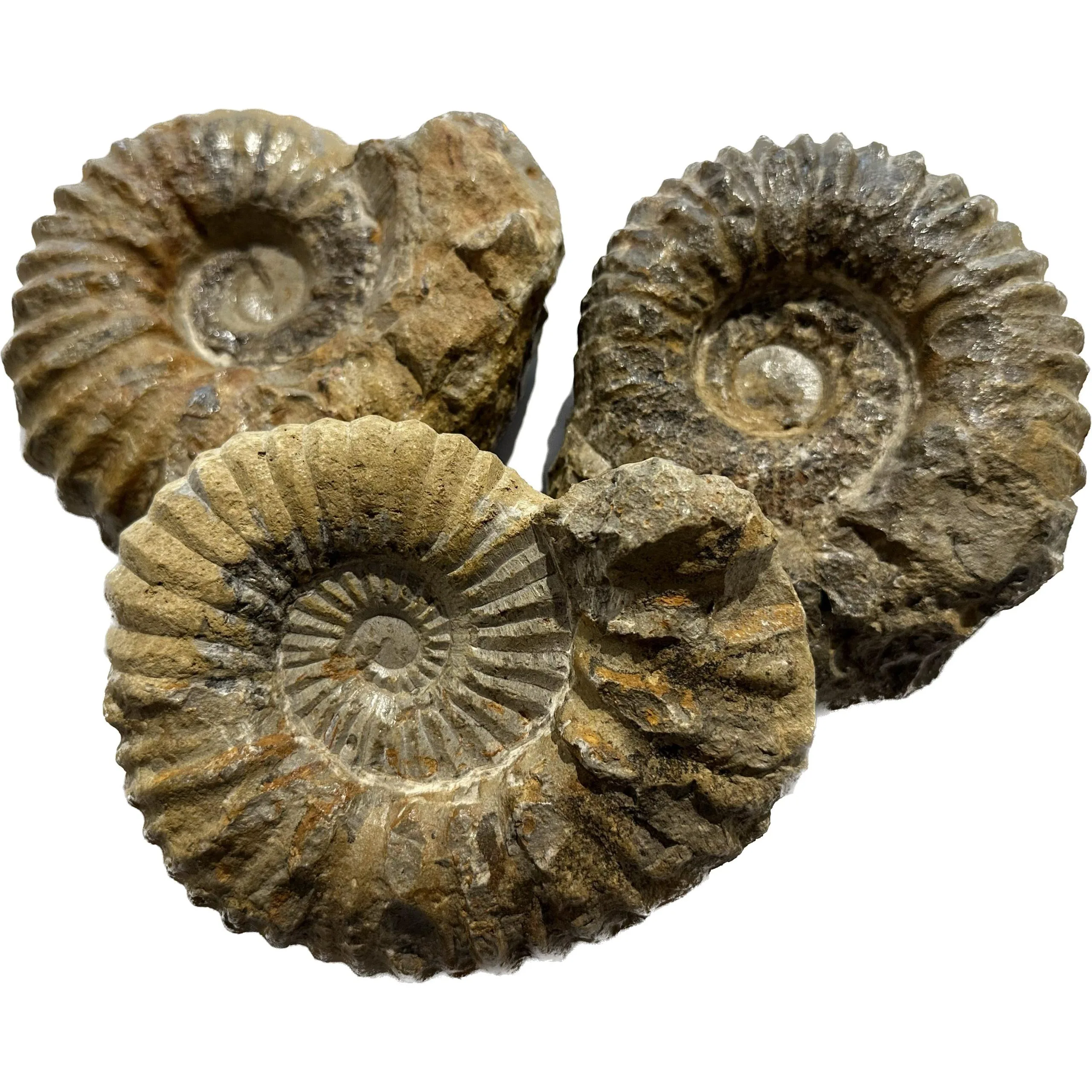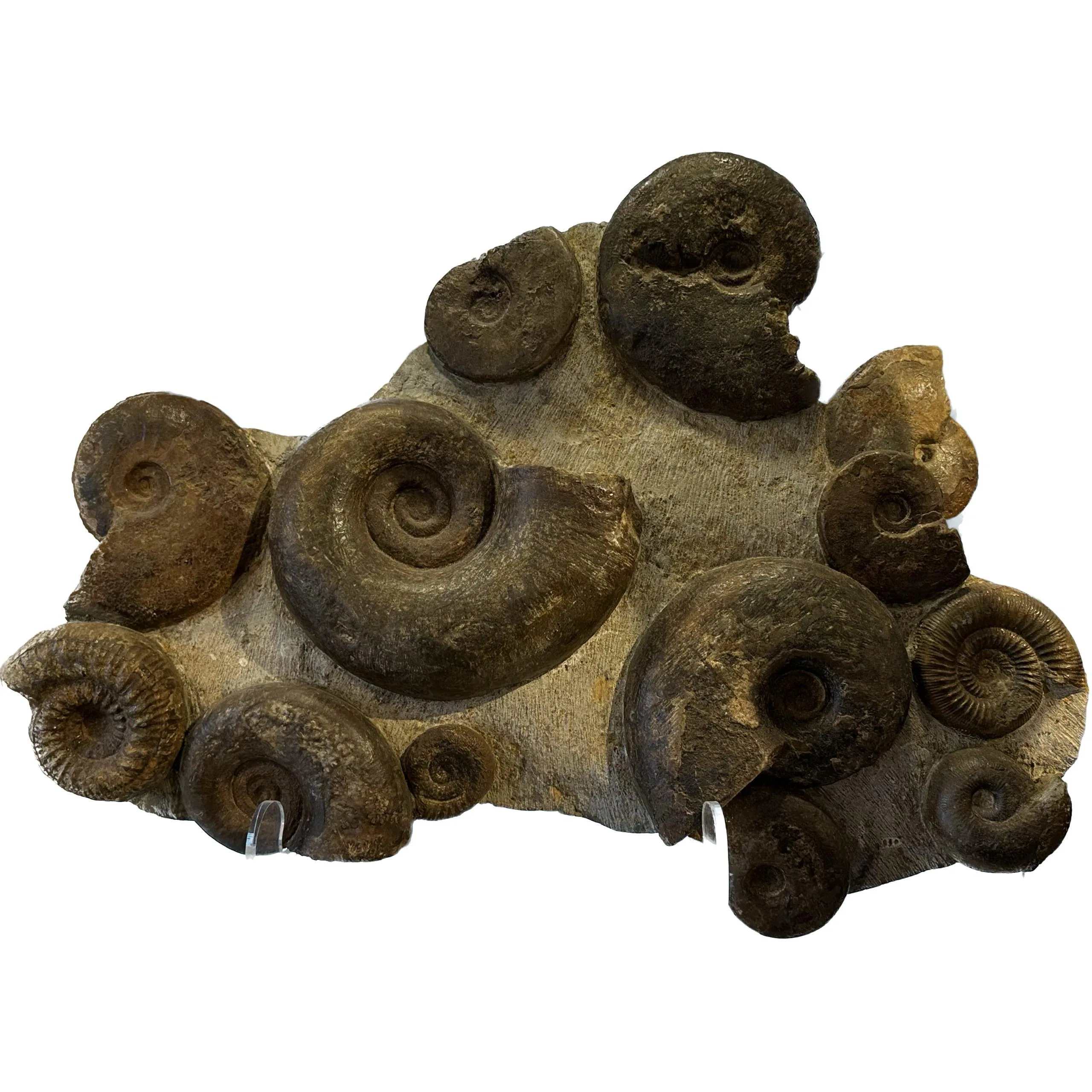Showing 1–24 of 119 results
-
Goniatite Ammonite, Morocco
$14.95 -
Goniatite Ammonite, Morocco
$14.95 -
Ammolite fossil, Alberta, Canada
Original price was: $22,000.00.$16,500.00Current price is: $16,500.00. -
Huge Fossil ammonite pair
$1,395.00 -
Ammonite sliced pair, 2 1/2″
$24.95 -
Agadir Ammonite, 6 inches
$49.95 -
Ammonite display, multiple species
$1,395.00 -
Ammonite display, multiple species
$1,950.00
Ammonite fossils are remarkable relics of Earth’s ancient history, bearing witness to the incredible diversity of life that existed millions of years ago. These creatures were marine mollusks belonging to the subclass Ammonoidea, which lived in the seas from the Devonian period around 400 million years ago until the end of the Cretaceous period about 66 million years ago. Ammonites were cephalopods, related to modern-day squids, octopuses, and nautiluses.
The name “ammonite” originates from the Egyptian god Ammon, who was typically depicted with ram horns, resembling the coiled shape of these fossils. Throughout history, ammonites have captivated human imagination. They have been found in various parts of the world, with notable localities including England’s Jurassic Coast, the mountains of Morocco, the plains of North America, and the cliffs of Madagascar.
Ammonites are highly collectible due to their aesthetic appeal, scientific value, and historical significance. They come in a variety of sizes, shapes, and colors, ranging from small, intricately coiled specimens to large, spiraled fossils measuring several feet in diameter. Some species developed elaborate ornamentation on their shells, adding to their allure.
Collectors and scientists alike are drawn to these fossils for what they can reveal about ancient ecosystems, evolution, and paleogeography. The study of ammonites has contributed significantly to our understanding of Earth’s geological history, aiding in the dating of rock layers and the reconstruction of past environments.
The collectability of ammonite fossils varies depending on factors such as rarity, size, quality of preservation, and location of origin. Rare species or specimens with exceptional preservation can fetch high prices in the fossil market, while more common varieties remain accessible to amateur collectors and enthusiasts.
Overall, the allure of ammonite fossils lies not only in their beauty but also in the stories they tell about the distant past, making them treasured pieces of Earth’s natural history.

